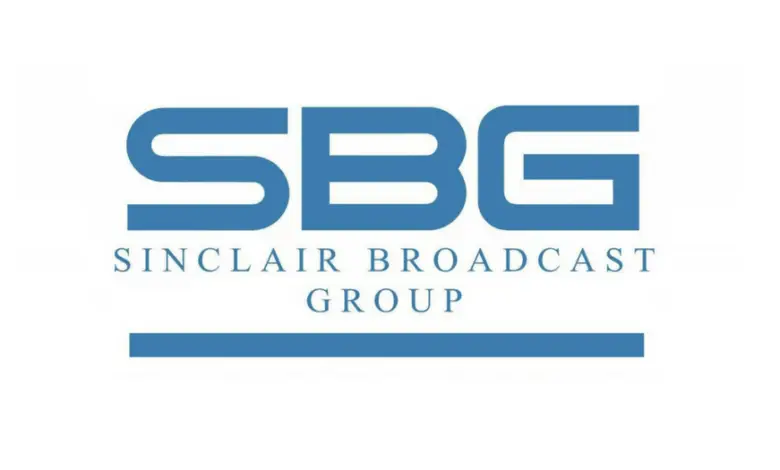
Sinclair Reportedly Considering Restructure to Escape Crippling Debt from RSNs
Marquee, Other Sports Channels Called Broadcast Giant’s 'Achilles Heel'
The world looked a whole helluva lot different when Sinclair Broadcast Group spent $10.6 billion to purchase 21 for Fox regional sports networks through its subsidiary Diamond Sports Group. Now, not much more than a year later, the Wall Street Journal reports that Sinclair and its creditors have each formed advisory groups as the company explores restructuring to escape the crippling debt it has accrued from the purchase.
Though the RSN bubble burst well before the Cubs formed a partnership with Sinclair on Marquee Sports Network, the broadcast giant saw enough of a future in the market to bet big on it. With the COVID-19 pandemic shutting down live sports and hastening a shift in the landscape, that wager quickly turned into a bad beat. Sinclair financed the purchase with “one of the largest U.S. junk-bond sales in years” and is now saddled with nearly $8 billion in debt as a result.
The company’s Q1 earnings call on May 8 downplayed financial hemorrhaging from its sports segment, but that’s when the shutdown was still relatively young. Then there’s the matter of the record $48 million fine from the FCC stemming from Sinclair’s botched attempt to purchase the Tribune Company in 2018, which was announced on the morning of the call. While that’s a drop in the bucket given the figures above, it’s still a black mark on the permanent record.
Sinclair was recently dealt another blow when Hulu + Live discontinued its carriage of several RSNs, including Marquee. That wasn’t entirely surprising given the high carriage costs for sports channels and the dearth of programming with MLB, the NBA, and the NHL all in their respective offseasons, but it also means Marquee has no streaming-only partners. Not great when more and more viewers are getting away from the traditional cable model.
“We think the RSNs have been Sinclair’s Achilles heel as it’s a distraction for investors, an asset in decline and a potential drain on retrans to support RSN carriage fees,” Wells Fargo Securities media analyst Steven Cahall shared in a research note. “While there’s no equity value in Diamond, these factors also mean less equity value in TV. Ultimately we view a separation of the RSNs as the best-case scenario for Sinclair [emphasis mine] as it removes a big overhang that’s needed management’s attention since the get-go.”
Whoa, that’s a pretty heavy statement and one that could have very big implications for the Cubs and Marquee. Remember, the new network isn’t a typical RSN arrangement in which the Cubs get paid an annual rights fee and just get to sit back and count their money. No, they hitched their wagon to Sinclair as a partner and were thus responsible for half of the startup costs.
The Cubs told everyone in May of 2019 that the partnership would mean “much larger” revenues would be “available immediately” because there was no cap on how much they could generate in carriage fees and ad buys. Trouble is, that presupposed a full season and a hearty appetite for the product. There was probably no shortage of bullshit in those words from Cubs president of business operations Crane Kenney and it’s been made all too clear since that it’ll take some time for Marquee to start pumping big money into team payroll.
What is far less clear is Marquee’s future should Sinclair go through with the restructure. Cord Cutters News theorized that divested RSNs could opt for a direct-to-consumer model rather than going through providers, but that idea faces two major problems. The first is that the current carriage-fee model means a channel earns money from every subscriber with access regardless of whether or not they ever tune in. But since only one-third of all TV households actually watch sports, networks would have to charge triple their current rates to generate the same revenues.
Then you’ve got the burden of individual leagues’ broadcast restrictions, which is the whole reason Marquee isn’t already on its own in the first place. The Cubs have a broad enough audience that they’d probably be better off serving Marquee on-demand at a reasonable price to anyone across the country who wanted it. Kenney and the Cubs wanted to make that move years before starting their own network, but it still remains little more than a pipe dream.
Now, it’s entirely possible nothing changes at all for Marquee even if Sinclair spins off the other sports channels. Those Fox RSNs seemed like an incongruous fit from the start because they’re part of a stable of channels that includes hundreds of local network affiliates. Marquee isn’t part of that same debt load and might actually hew a little closer to those local news broadcasts with its homespun feel and lineup of former Cubs players. There may also be greater potential for profit down the road because of the Cubs’ popularity and financial stake.
The ideal scenario would be for MLB to lift the archaic blackout restrictions that do nothing but hurt its product, even if the idea is to protect the local broadcast rights of less popular teams and markets. For instance, allowing the Cubs to peddle Marquee across the country would probably hurt the Diamondbacks and Rays because everyone from the Midwest retires to either Phoenix or Florida’s Gulf Coast. The Marlins wouldn’t be affected because they don’t have fans in the first place and everyone on the Atlantic side is from New York and New Jersey.
I honestly have no clue where this is all headed, and not only because I have only a very loose grasp of all the corporate finance mumbo-jumbo. What I do know is that Sinclair has a metric shit-ton of debt — almost exactly as much as Rob Manfred claims MLB’s 30 clubs have amassed this season — that will take more than just good old-fashioned sweat equity to earn off. That could make Marquee a line item in a spreadsheet if Sinclair goes scorched earth.
Man, the hits just keep on coming for the Cubs, don’t they? And we haven’t even gotten into what could be a very frustrating winter. Y’all might wanna buckle up and stay seated until this ride comes to a complete stop.

